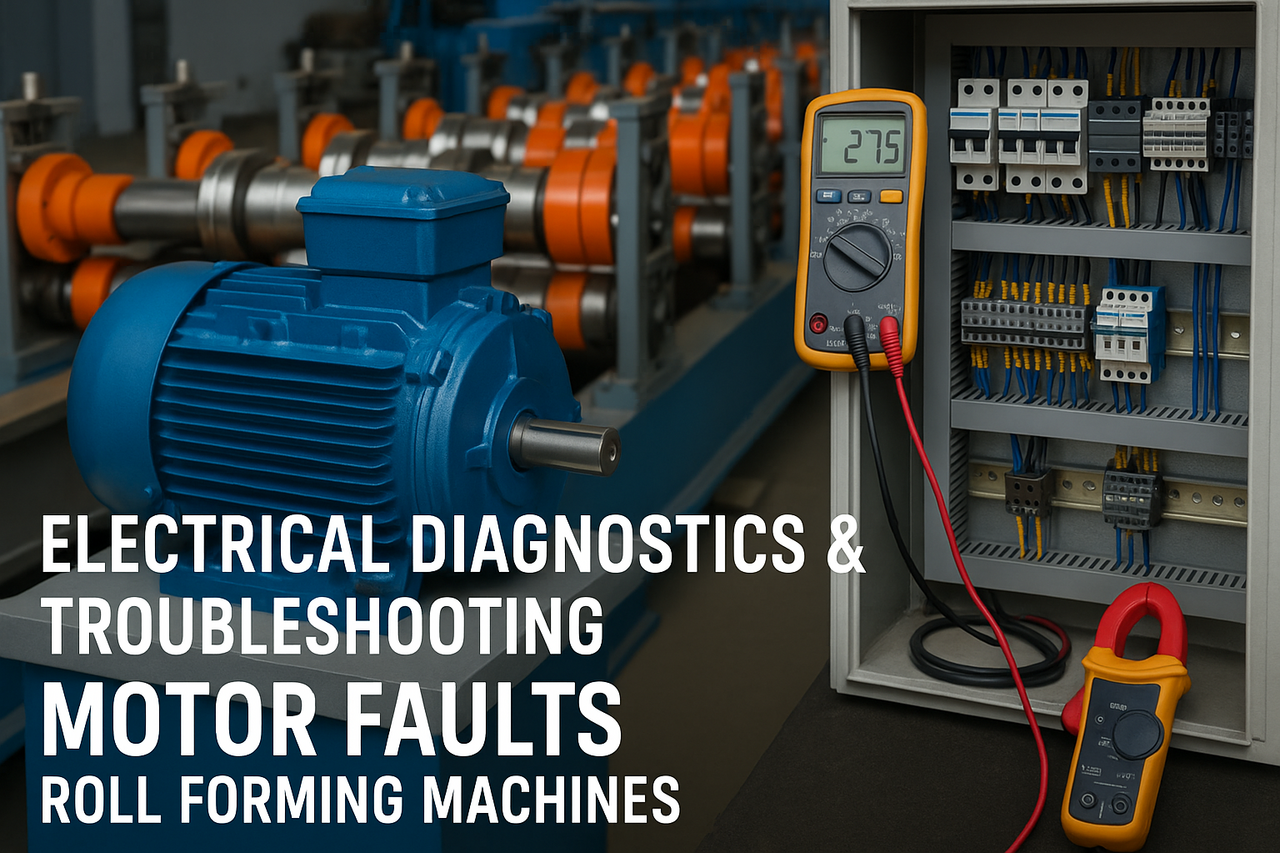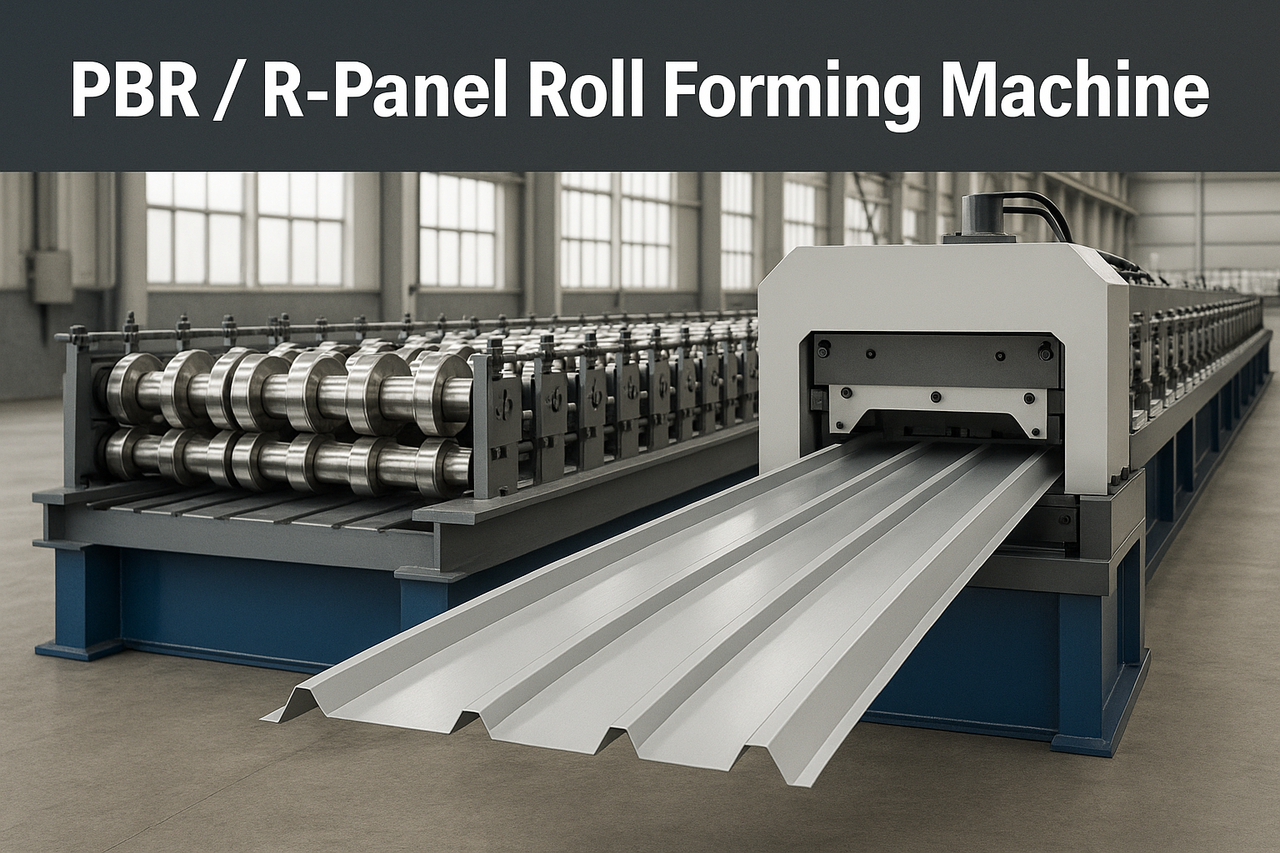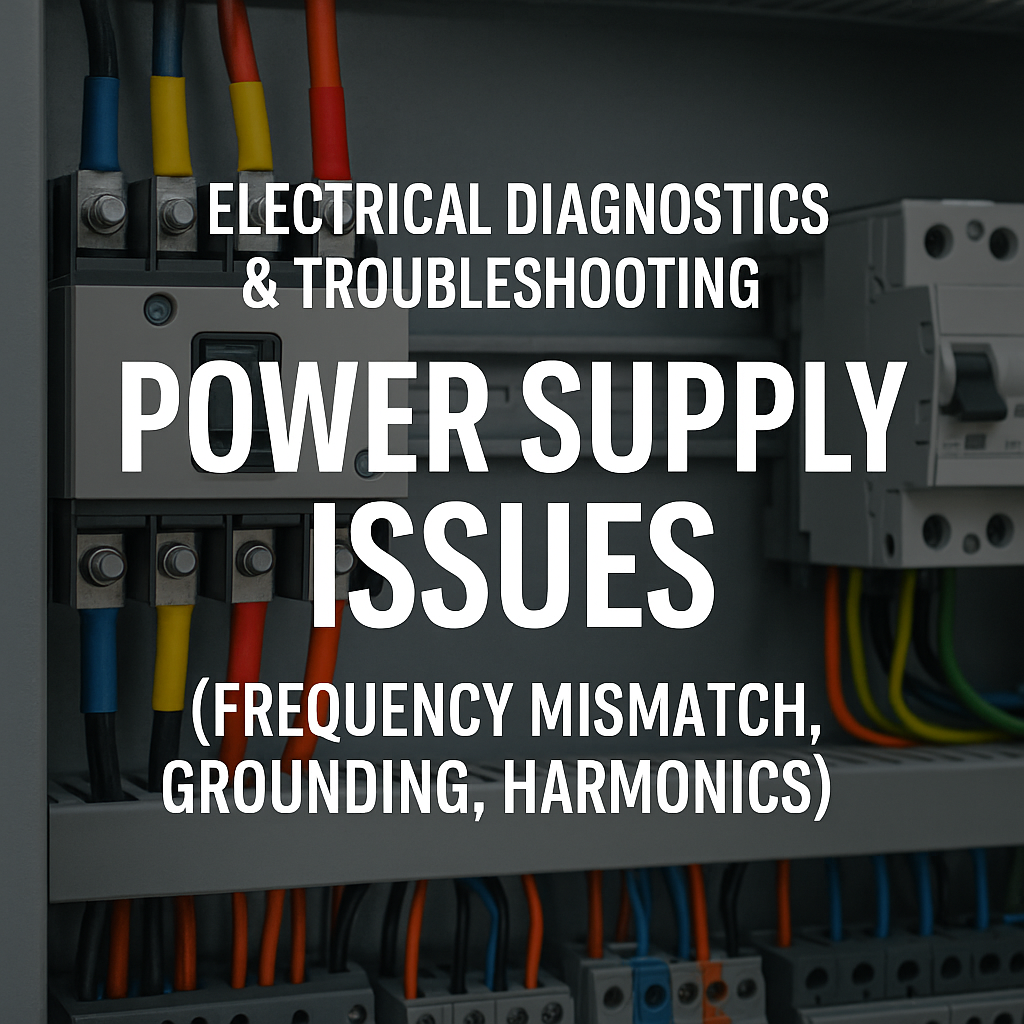
Posted on Sunday, November 16, 2025
Electric motors are the heart of every roll forming machine. Whether you are running a roofing panel line, a C/Z purlin mill, or a metal decking system, motors drive your entire production output. When something goes wrong — overload trips, overheating warnings, phase loss alarms, or unexpected shutdowns — your entire factory stops.
This guide explains how to diagnose, troubleshoot, and prevent motor-related electrical faults on roll forming machines. It’s designed for factory owners, operators, maintenance teams, and anyone responsible for keeping machines running.
Roll forming machines are demanding systems:
Rapid acceleration & deceleration
Heavy loads during forming
Hydraulic systems running alongside electric drives
Poor-quality incoming power in many countries
Long production hours
Because of this, motor issues are among the top 5 reasons for machine downtime worldwide.
The most common problems include:
✔ Motor overload
✔ Phase loss / missing phase
✔ Overheating
✔ Loose wiring or burnt connections
✔ Contactor/overload relay failures
✔ Incorrect voltage
✔ Mechanical binding increasing electrical load
Overload happens when the motor draws more current (amps) than it’s rated for. Overload relays and smart drives trip to protect the motor from burning out.
Material jam inside roll former
Misaligned rollers causing excessive drag
Poor lubrication
Worn bearings
Incorrect coil gauge (too thick)
Incorrect VFD parameters
Blocked hydraulic pump
Machine running faster than designed
Loose belts/couplings slipping
Overload relay trips
Motor breaker trips
VFD shows “OC” (Overcurrent), “OL” (Overload)
Motor runs hot
Slower machine response
Inspect the mechanical load first
70% of overload problems are mechanical, not electrical.
Check for jams, tight rollers, seized bearings, or misalignment.
Check motor amp draw
Compare against motor nameplate current.
Check lubrication & bearings
Dry bearings increase amp load massively.
Reduce run speed temporarily
Helps identify overload caused by speed settings.
Verify VFD parameters
Torque boost, acceleration, deceleration times, and overload protection.
Check the hydraulic pump
A partially blocked pump increases load.
Reset the overload relay and test again.
Three-phase motors require all 3 phases (L1, L2, L3). If one is missing, the motor draws excessive current on the remaining phases and quickly overheats.
Blown fuse on one phase
Loose terminal connection
Damaged cable
Failed contactor
Utility/grid problems
Worn-out isolator or breaker
Motor hums but won’t start
Slow or weak start
Overload trips
Motor overheating
Unequal phase voltages
Measure phase-to-phase voltage at the main panel
(Expected: 380V / 415V / 440V depending on country)
Check for a blown fuse
A common and easy-to-fix cause.
Inspect all terminals
Look for burnt terminals or loose bolts.
Check VFD input
Some drives show “PHL”, “PHL-1”, “PH Loss”.
Test continuity on all cables
Damaged insulation or crushed cables cause intermittent phase loss.
Test motor windings
A burnt winding can cause phase imbalance.
Excessive mechanical load
Poor ventilation
Dust buildup around the motor
Wrong voltage (too high or too low)
Internal winding fault
Incorrect motor protection settings
Ambient temperature too high
Motor casing too hot to touch
Thermal protection trips
VFD “OH” or “Overheat” warning
Burning smell
Reduced speed
Remove dust buildup
Airflow is critical.
Check fan rotation
A broken fan = instant overheating.
Measure voltage under load
Undervoltage = higher amp draw.
Check for mechanical drag
Again, 70% of motor heat issues are caused by mechanical load problems.
Use a thermal camera
Identify hot spots in motor casing or panel.
Inspect bearings
Worn bearings increase heat significantly.
Every motor fault should include a full inspection of:
Are they correctly sized?
Are they tripping too early?
Check for loose wiring.
Burnt contacts cause voltage drops.
Weak coils lead to unstable engagement.
Ensure it matches motor kW size.
Check for phase imbalance.
Check alarms & fault history.
Verify motor parameters in the drive.
Review current, voltage, and temperature feedback.
Tighten all terminals.
Inspect for burnt or darkened insulation.
Motor faults are usually caused by mechanical issues, not electrical.
Roll stand alignment
Bent shafts
Worn bearings
Chain tension
Gearbox oil level
Hydraulic pump load
Material thickness vs. machine rating
✔ Check motor amp draw monthly
✔ Inspect terminals every 3 months
✔ Clean cooling fans weekly
✔ Lubricate bearings on schedule
✔ Monitor VFD logs
✔ Test overload relay annually
✔ Keep motors free from dust/oil
Install phase-loss protection relays
Use soft starter or VFD to reduce stress
Run machine at correct speed
Avoid over-gauge materials
Keep factory temperature controlled
You need a certified technician if you notice:
Repeated overload trips
Motor running hotter than usual
Strange noises or vibration
Burning smell
Phase imbalance
VFD showing multiple errors
Unstable motor RPM
Machine Matcher offers worldwide electrical technician services for:
Diagnostics
Repairs
Full machine rewiring
Motor replacement
VFD setup
Panel upgrades
On-site and remote support
Likely mechanical drag, incorrect VFD settings, or failing bearings.
Yes — a blown fuse causes phase loss, which overheats the motor fast.
Blocked airflow or excessive mechanical load.
If it trips randomly or is incorrectly sized, yes.
Yes — undervoltage increases amp draw and overheats windings.
We provide:
Motor diagnostics & repair
Full machine rewiring
VFD programming & replacement
Panel upgrades
Overload, phase-loss, and fault diagnostics
Remote troubleshooting
Emergency on-site repair
Available worldwide with teams in the USA, UK, EU, Middle East, Africa, South America, and Asia.
Looking for the right roll forming machine or expert guidance on your next project? Machine Matcher is here to help. Our global team provides 24/7 technical support, expert advice, and guidance on machine selection, setup, and maintenance—ensuring your operations run smoothly from day one.
With team members based worldwide—including the UK, USA, Middle East, and beyond—we are equipped to assist buyers across the globe. Whether you’re sourcing a single machine or upgrading an entire production line, our experts are ready to provide tailored solutions and support every step of the way.
Get in touch now and let Machine Matcher help you find the perfect roll forming machine for your business.
United Kingdom (Main Office)
Phone: +44 20 335 56554
United States
Phone: +1 407 559 7948
Mobile / WhatsApp: +44 7816 972935
Email: [email protected]

32/1000 Box Profile Roll Forming Machine – Complete Guide & Specifications
Posted on Sunday, November 16, 2025
High-performance 32/1000 box profile roll forming machine for roofing and cladding. Full specifications, profiles, applications, pricing

PBR / R-Panel Roll Forming Machine – Complete Guide & Specifications
Posted on Sunday, November 16, 2025
PBR / R-Panel roll forming machine for roofing and wall cladding. Full specs, profiles, applications, pricing, and global buying guide. Built to order.

Posted on Sunday, November 16, 2025
How to Diagnose and Fix the Hidden Electrical Problems That Cause Downtime
Copyright 2025 © Machine Matcher.